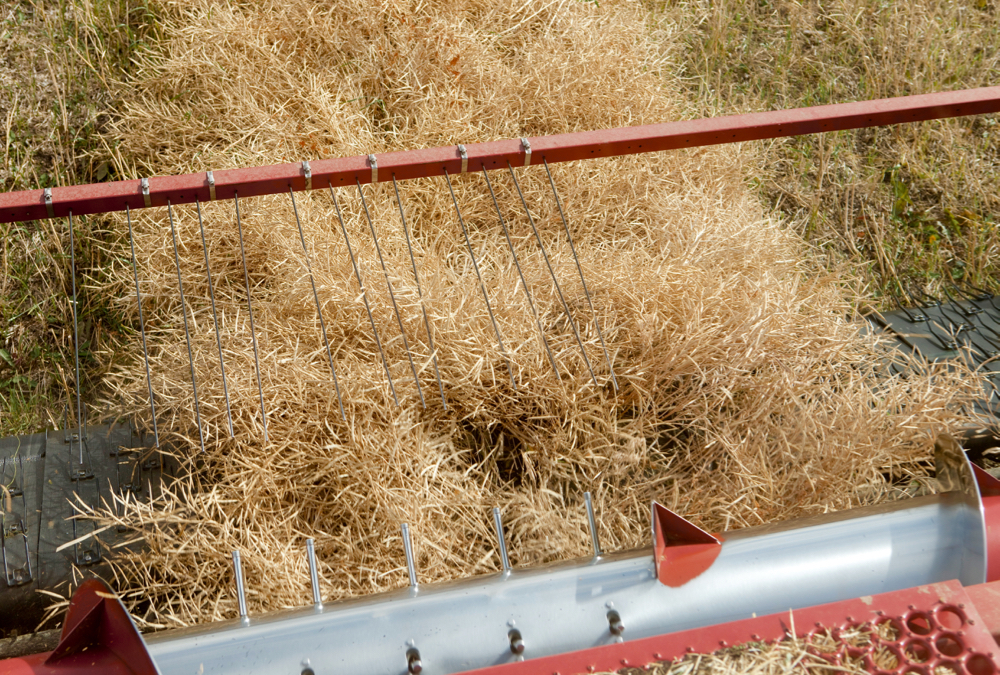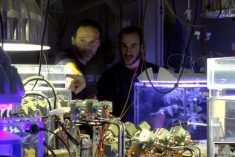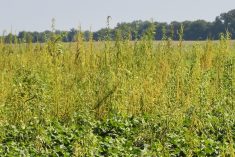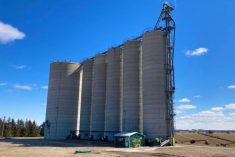Ontario’s agriculture minister stands by his decision to halt a process that was expected to open up how processing tomatoes are priced in the province.
Jeff Leal’s decision, announced in August, resulted in a Dec. 21 threat from Ontario’s largest tomato processors to significantly cut back their tomato purchases from Ontario farmers in 2017.
Processing tomato prices have been negotiated by the Ontario Processing Vegetable Growers on behalf of producers. But processors want to negotiate with producers individually — and the Ontario Farm Products Marketing Commission’s now-stalled proposal had been expected to lead to regulatory adjustments toward that end.
Read Also

Alberta harvest wrapping up: report
Harvest operations advanced to 96 per cent complete in Alberta as of Oct. 7, with only a few late-seeded cereal and canola fields remaining, according to the latest provincial crop report.
“It was the right decision,” Leal said during an interview with Glacier FarmMedia, looking ahead to 2017 in Ontario agriculture.
Leal’s decisions, such as overruling the OFPMC, are made with advice from OMAFRA and ministerial staff, he said.
“I depend on them to help me make the right decision that will benefit the agriculture sector in the province of Ontario.”
His directive to the commission is “very clear,” he said. “We have to come up a solution that benefits both parties and a very detailed economic analysis needs to be done before we reach the solution on this particular matter.”
Leal stepped in after farmers protested during the short consultation period, scheduled during last year’s production season, on the changes proposed by the OFPMC.
Geri Kamenz, chair of the commission, has since resigned and been replaced by Jim Clark, executive director of the Ontario Cattle Feeders’ Association, as interim chair.
Wynne’s jobs challenge
Processing has played a major role in the 42,000 jobs Leal said have been created toward the province’s goal of adding 120,000 new jobs in the sector by 2020.
“We want to continue to grow the agriculture sector in Ontario,” said Leal, who last Thursday was appointed as Ontario’s minister responsible for small business, on top of his agriculture responsibilities.
The sector’s job growth so far has occurred mostly in retail and processing, he said, but has been seen throughout the supply chain.
One of the strengths of the sector is that it includes all of the steps of the agrifood chain, he said, from farm supply to farmers to processing and markets for final sale.
Ontario is also a major agricultural exporter, handling $10 billion of Canada’s $30 billion in agrifood exports to the U.S. — which has Leal concerned with the anti-trade rhetoric emerging from the U.S.
“We know that president-elect Trump has targeted Mexico, but you have to be watchful of unintended consequences when someone else is the target… you may get hit by the wake that sometimes leaves.”
Meanwhile, Leal has led trade missions to China and, last year, India, where he said there is opportunity. He noted he’s been impressed by Ontario food’s reputation around the world.
“When I was in China people knew about Foodland Ontario and the quality of our food. Canada and Ontario represents both quality and safety second to none and that is a premium that Ontario and Canada has and it is a great way to open doors in every part of the world.”
China is more interested in quality food products, while India needs technology that can help its food infrastructure to help reduce food waste. About 40 per cent of the crop in India is wasted due to poor storage logistics, said Leal.
Neonics: ‘Change is difficult’
At home, treatment regimens for Ontario’s crops will continue to evolve, Leal said, and there will be new products developed that can replace neonics as seed treatments.
“Our farm community continues to work through the framework that has been provided,” he said. “For society in general, change is difficult.”
The government, he noted, supported Conservative MPP Lisa Thompson’s private member’s bill, which aimed to define professional pest advisors.
Thompson’s bill was meant as a response to the concern that there were not enough advisors available, as per the province’s definition, to allow farmers to apply to use neonic pesticides.
Precision diagnostic technology, such as drone imaging, could also enable farmers to more precisely manage pesticide applications in the future, Leal said.
Carbon caps
Leal said he also continues to work on the province’s climate change action plan.
“Carbon sequestration is something farmers know something about. Farmers are our best environmental stewards and we need to remind our urban audience of that.”
Leal, however, couldn’t list any way in which farmers could benefit from their ability to sequester carbon. Farmers are being hit by increased fuel costs following implementation of an emissions-regulating cap-and-trade system in Ontario.
Early cap-and-trade systems allowed farmers to sell carbon credits on account of their crops’ carbon sequestration, particularly in crops under minimal tillage. However, the systems that have been developed are more regulatory and managed by governments.
All funds collected through cap-and-trade will be returned to the people of the province, including farmers, Leal said, but he indicated some of those returns would come through program spending, not directly via tax cuts.
A project to upgrade the 40-year-old provincial soil map was one example he gave of a program that could be paid for by cap-and-trade funds.
Growing Forward sequel
Ontario, Leal said, is pleased at the response it’s getting from federal Agriculture Minister Lawrence MacAulay in discussions on the next agriculture policy funding framework, now being negotiated to replace Growing Forward 2 in 2018.
Farmers’ biggest concern over Growing Forward 2 is that so much funding was reduced and program eligibility tightened under the new framework.
“We want to make sure that business risk management plans that we share jointly with the government of Canada are effective for the farm community,” Leal said.
— John Greig is a field editor for Glacier FarmMedia based at Ailsa Craig, Ont. Follow him at @jgreig on Twitter.

















